Tag Archive for: SPY
Stock Market Updates
/by Peter BrandtStock Market Updates
It is with some discomfort that I am always pointing out potential tops in the U.S. stock market indexes. But, I must call them as I read them. The S&P daily chart has made ZERO upward progress in 18 months. A possible complex H&S top formation is under construction. Also note the appearance of a 7-week H&S top pattern. I am willing to short this smaller H&S pattern if given a well-defined risk point. I will give up on a bearish interpretation of the S&Ps if a new high is made – but this does not mean I would have any interest in being long in new high territory.
The Nasdaq is tracing out a possible broadening top, although as I have pointed out in recent updates, the rally from the Feb 2016 low has exceeded the normal construction of a true broadening top. Outside of the Nifty (India), the Dow Utilities (dividend play) and the Japan Mothers Index, I have a hard time finding a futures market index I am willing to own.
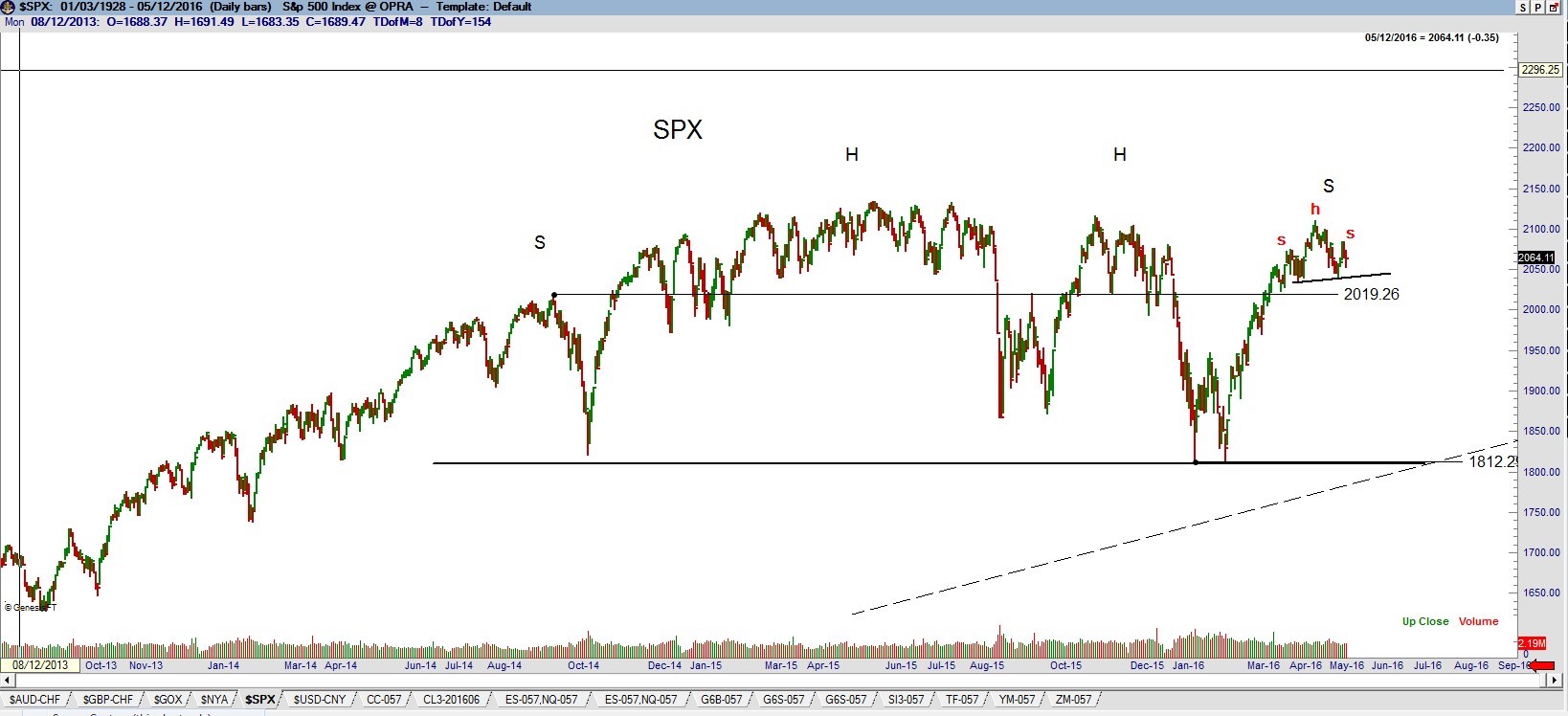
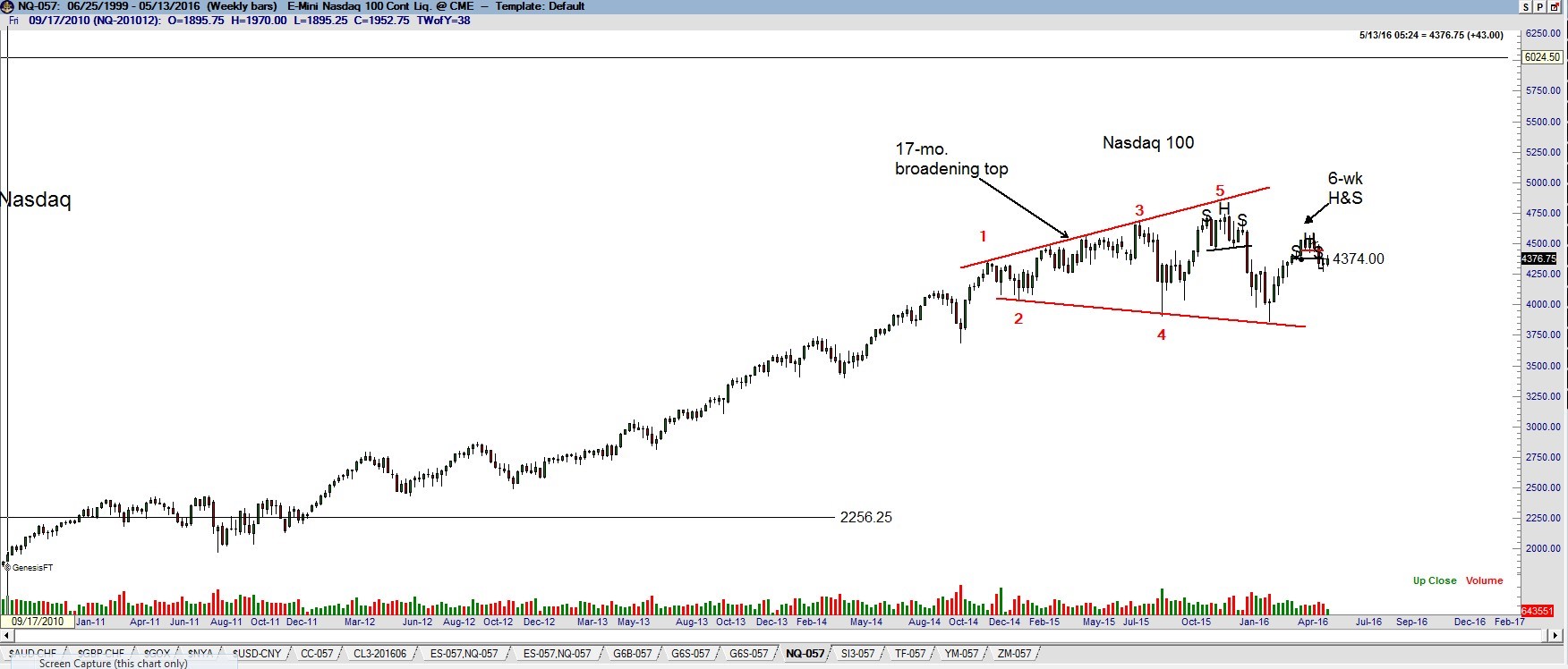
plb
##
Is the present decline in the S&Ps a déjà vu of 2011?
/by Peter BrandtExamining the chart structures of 2011/2012 with the present period
Classical charting principles at the core represent analog analyses -- that certain price patterns tend to repeat over time with slightly different variations.
An interesting analog situation has developed in the S&Ps. Some technical analysts have declared that the current market construction is analogous to 2011/2012 and will be similarly resolved by a continuation of the dominant bull trend. I completely disagree. Let’s examine the construction components of each period. The top chart is the S&Ps during the 2011/2112 period. The bottom chart is the current market.- Both periods had a textbook H&S top and, coincidentally, each top was completed in the month of August -- both marked as Stage 1
- Both periods quickly met the target of their respective H&S top patterns only to develop a period of extreme volatility -- both marked as Stage 2
- Both periods then rallied sharply back into the price zone of the initial H&S top pattern only to develop an other range of volatility -- both marked as Stage 3
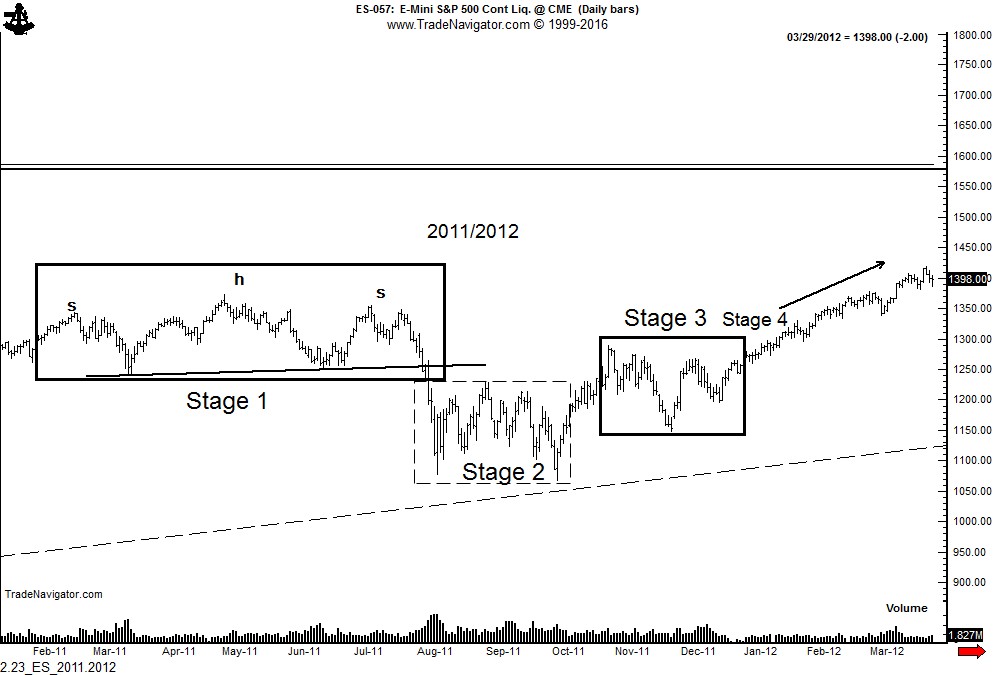
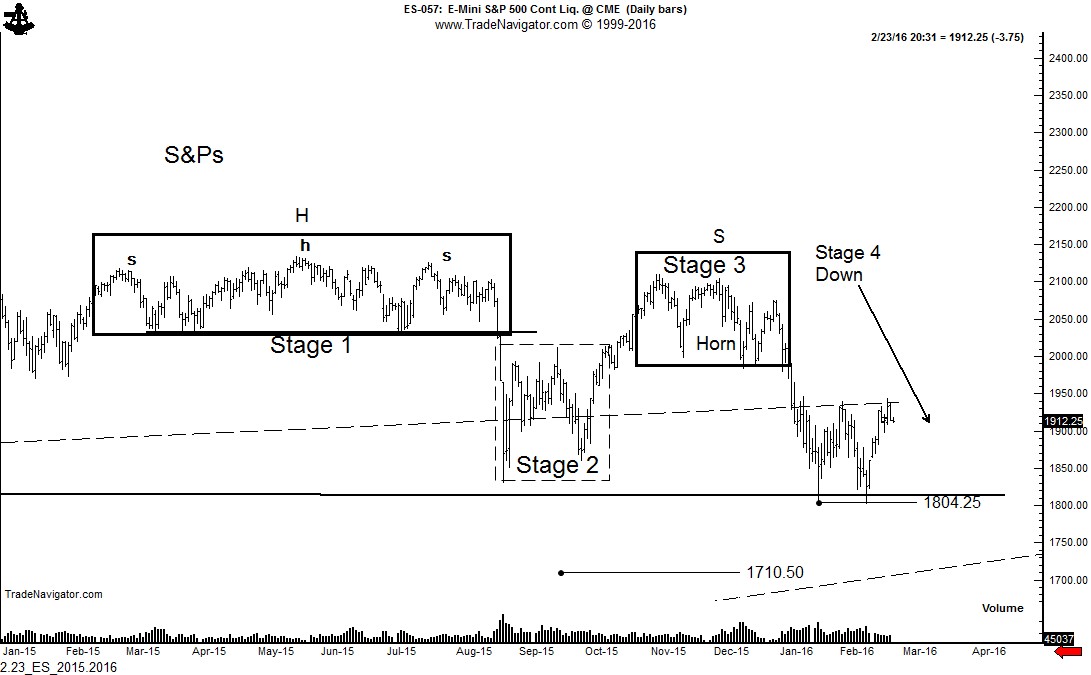 Read More
Read MoreThe chart case for a bear market in U.S. equities
/by Peter BrandtAll major U.S. stock indexes are forming potential tops
A case can be made based on classical charting principles that the current decline in the U.S. equity markets is just phase one of a larger price decline -- in other words, that U.S. stocks are in a bear market. Consider the following. Factor believes that the most significant price of the day is the closing price and the most signficant price of the week is Friday's closing price. The weekly closing price chart of the DJIA displays a possible H&S top pattern. This top has not yet been completed, but a Friday close below 15,800 would do so.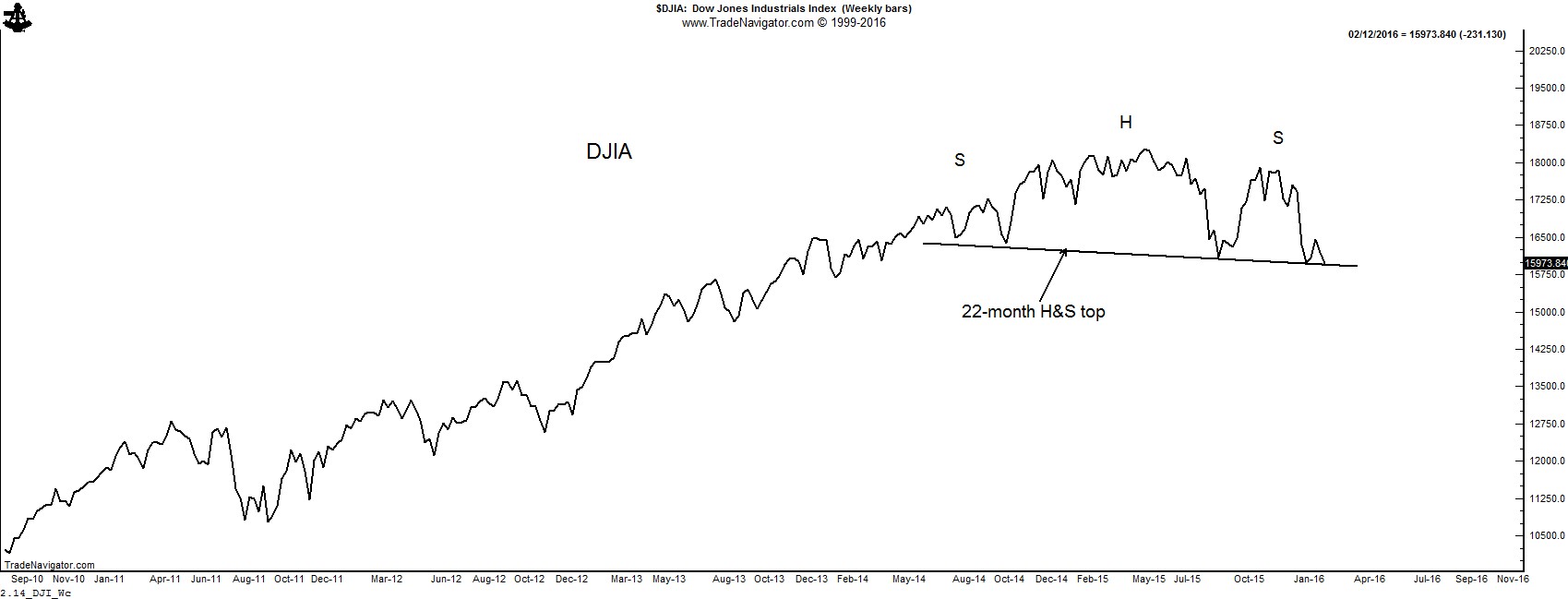 Read More
Read More






